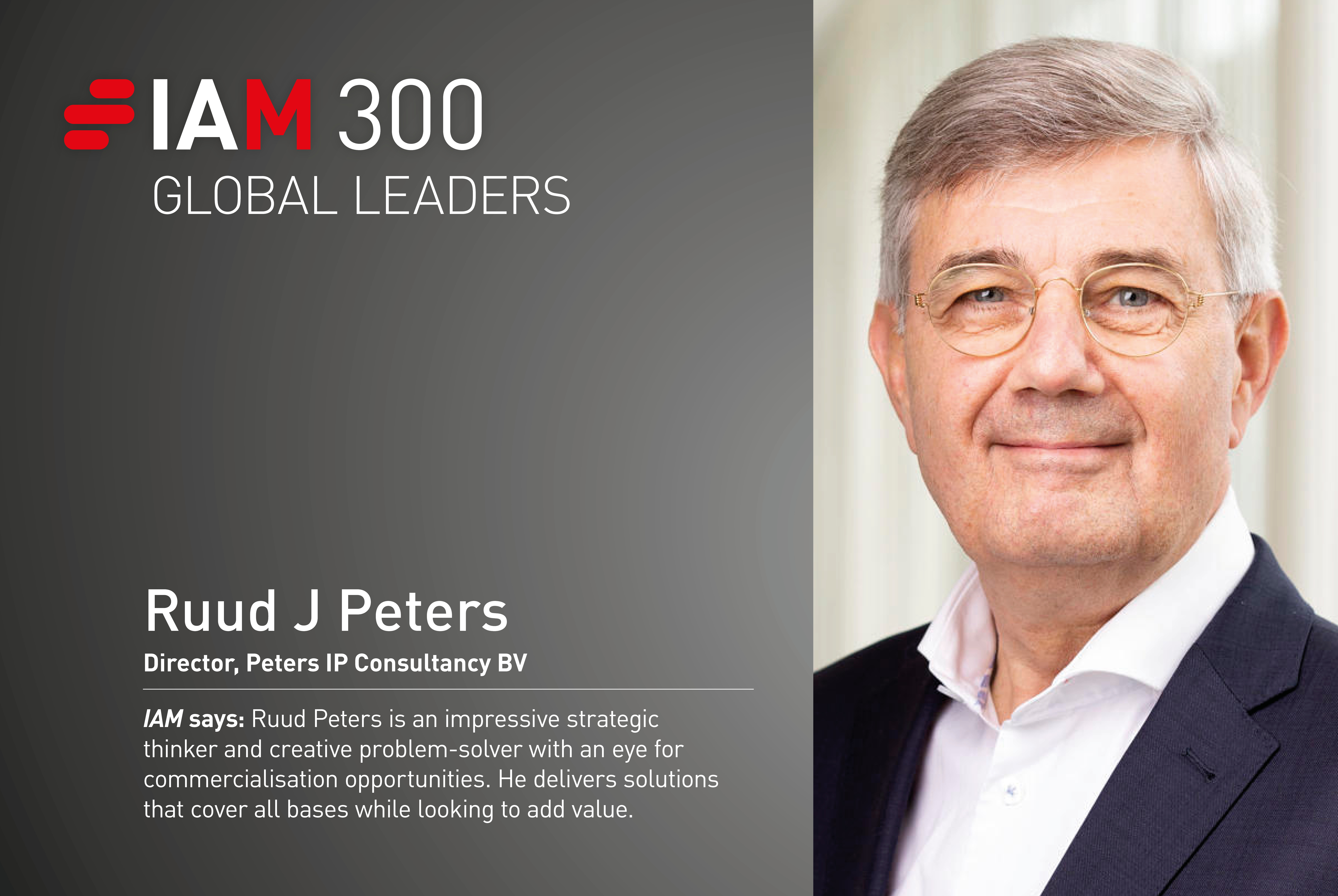Ruud Peters
What inspired you to overhaul the IP department when you took the helm at Philips, and what advice would you give to others considering doing the same?
I was convinced that we could do so much more with our intellectual property. Previously in the IP department we lived in an ivory tower, remotely connected to the business but mainly focused on our own profession. Having talked to IP heads, I know that many want to change their organisation too but are afraid to take the first step. They don’t know whether they will get support from higher levels within their companies, they are concerned about resistance from their own people, or are afraid to fail. I would advise them to make a solid plan with a strong focus on the tangible benefits for the company’s businesses, together with an ambitious but realistic implementation plan with clear deliverables. Seek outside support if you need help with that. Sell your plan internally to a couple of senior company members to get their support. Start preparing your IP organisation for its new role as early as possible because once you get the green light, you should be ready to deliver. Move as fast as possible - do not get stuck in the details before making the first steps, leverage early supporters, adjust on the go, show determination and perseverance and celebrate early successes.
How do you measure the success of a global IP strategy?
Many IP departments use KPIs that focus on their internal operations, like the number of invention disclosures, patent filings and grants. However, these do not show whether a team is delivering on its global IP strategies. The only relevant KPIs for this are, in my view, the value captured for the business and the potential value estimated to be captured from intellectual property in the future. Value does not only include licensing revenues, if any, but also additional profits and cost savings due to intellectual property. Depending on the IP strategy, suitable approaches for determining both captured and potential value need to be selected. I advise companies how to do that in practice.
You are a renowned educator, having taught intellectual property at both Zhejiang University in China and the Center of Intellectual Property in Gothenburg, Sweden. How did those experiences compare, especially with regard to the IP landscapes of both countries?
At the risk of over-simplification, the main difference is that European senior IP professionals generally stay longer in their jobs and in well-established IP departments compared to their Chinese counterparts. Further, in Europe they are somewhat more conservative and often focused on risks, whereas in China they tend to concentrate on opportunities and seeking advice on how best to grasp them. What they have in common is their struggle to create value from their IP portfolios and to get access to and attention from senior level management in their companies. I aim to help them to overcome these related challenges.
What is your take on the European Commission’s draft SEP regulation proposal?
In all of its communications since 2017, the European Commission has made clear that it wants to increase SEP transparency to introduce a reasonable aggregate royalty and to promote alternative dispute resolution. By opposing any change, SEP licensors generally have not properly assessed the political climate surrounding SEPs. In most instances, they argue that there is no need for the draft regulation, that it introduces unproven concepts, increases cost and uncertainty, and that the implementation is given to an organisation that lacks SEP knowledge. Instead of this uphill battle, I think it is better to constructively seek to improve the draft regulation so that it better balances the interests of SEP licensors and implementers. Several concrete proposals for this were made by Fabian Hofmann (Federal Court of Justice, Germany), Nikolaus Thumm (senior scientific advisor at ETH Board, Switzerland) and myself.
How do you expect the IP transactions space to evolve in the next five years?
Generative AI approaches, methodologies and tools will have a profound impact on how intellectual property is managed in all its aspects. I expect that both the number and speed of IP transactions will increase with generative AI, since it can carry out many of the tasks required for the preparation and execution of IP transactions faster than people can. As a result, the work of IP professionals involved in transactions will significantly change over time.
Ruud Peters
Director
[email protected]
Ruud Peters is an IP business leader with both strategic and operational capabilities. Under his leadership, the Philips IP department was transformed from a cost centre into a successful profit and loss organisation with full transparency of the return on IP investments at every business and product level in the company. After his retirement, he founded his own consultancy, supporting companies of all sizes across a broad range of IP and organisational matters.
